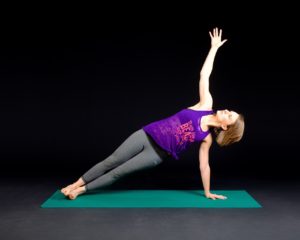 Joseph Pilates created his series of exercises early in the last century. Born in Germany, Pilates, called his exercise Contrology and presented it in his famous book “Return to Life Through Contrology”. Pilates meant for his workouts to improve flexibility, strength and develop control over the whole body with particular focus on the core – consisting of the abdomen, low back and the hips.
Joseph Pilates created his series of exercises early in the last century. Born in Germany, Pilates, called his exercise Contrology and presented it in his famous book “Return to Life Through Contrology”. Pilates meant for his workouts to improve flexibility, strength and develop control over the whole body with particular focus on the core – consisting of the abdomen, low back and the hips.
Pilates grew up in a family of alternative therapists and was inspired by the German health movement of the time. Along with developing exercises he also later designed various machines such as the Pilates Reformer, Wunda Chair and Spine Corrector. His philosophy of body alignment is based on 6 core priciples – breathing, concentration, control, centre, flow and precision.
Breathing is a big part of Pilates and is the focus of many exercises. In Pilates you’re taught to breathe out on the effort and inhale on the return. Pilates teaches focus and concentration and that precise control of the exercise is a vital part of success. Control refers to the muscular ability of the body to overcome resistance whether it be your own body or the springs on a Reformer. The centre is the focal point of the Pilates method. All movements should begin at the centre, or core, and move outwards to the limbs. Pilates teaches the idea of flow, or smooth transition between exercises presenting as a very elegant form of controlled movement. Pilates wanted precision of movement which enabled the elegant flow carried over into everyday life.
Pilates was very critical of the healthcare professionals of his time. In his writings he called out many “establishment” health professionals for failing to “walk the walk” when it came to health and well being. He espoused a balance between both the body and the mind and discussed how the human skeletal system when used properly could contribute to improving human health. He goes into great depth to analyse how infants develop in human society compared to the young of animals in relation to both how they are encouraged to move and also how they are fed. Pilates was a huge admirer of the Ancient Greeks and complimented them on their amazing physiques as portrayed in art galleries around the world – an example is the world famour statue of David by Michaelangelo in the Galleria de L’Academia in Florence. He in particular postulates that children should be encourgaed to breathe properly and fully from an early age and that they should be encouraged to play outdoors and get plenty of sunshine (something today’s generation don’t get enough of!). His description of breathing interrelates with his ideas on optimal posture and how physical activity can contribute to this optimal posture. He talked about exercises oxygenating the blood and all muscle fibres in the body and used many animal analagies to demonstrate the best ways to move and then relax. He recognised in his writings the need to exercise and develop the smaller muscles (mainly around the spinal column) in order to form a solid base on which to develop the larger muscles of the body.
He also recognised at the time the inbalance between calorie intake and activity level and how it contributed to weight gain and therefore ill health (these original writings were before the Second World War and these observations weren’t as obvious as they are today!). Pilates also recognised the profound benefits of proper restorative sleep and detailed several recommnedations to help facilitate restful sleep.
Pilates Exercises
Pregnancy Pilates
Core Pilates
